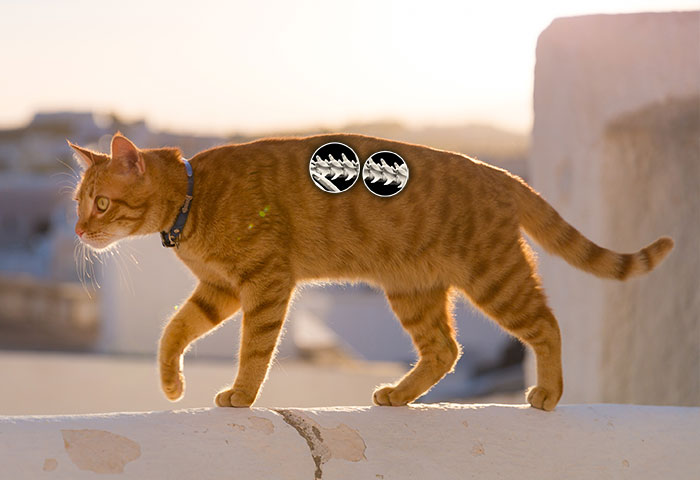


SERVICES
Feline Intervertebral Disc Disease (IVDD)

Dogs, and to a lesser extent cats, can be affected by disc problems. There are three areas that are most commonly affected; the neck, the mid-back region and the lower back. Presenting signs can vary from simple mild discomfort all the way to complete paralysis of either the rear or all four limbs.
A disc is a structure that acts like a shock absorber between each of the bones of the spinal column. Some pets begin to develop degenerative changes to the disc early in life. The outer tough portion of the disc becomes friable, so that a simple injury may cause a tear, allowing the inner normally gelatinous material to escape and put pressure on the outlying spinal cord.
Treatment of disc problems varies from simple restriction of exercise and anti-inflammatory medications for mildly affected patients, all the way to surgical procedures for patients where the spinal cord has been compromised more severely. The aim of treating a patient with a spinal injury is an attempt to prevent irreversible damage to the spinal cord. Pets that have lost a significant amount of their ability to use their legs are often immediate surgical candidates. We operate these patients on an emergency basis in order to give us the best chance of preserving the spinal cord and preventing permanent damage. The particular type of surgery would depend upon the location of the injury.
Click on the procedure below to learn more.
Myelogram
A Myelogram is a radiographic study of the spine following the injection of a contrast material into the space between the spinal cord and bony vertebrae. In a normal animal, the dye would flow evenly along the spinal cord. If a herniated disc is present, the dye column is not present or is displaced at the location of the injury and swelling. This specialized study is done under anesthesia, often just prior to moving a patient into surgery.



